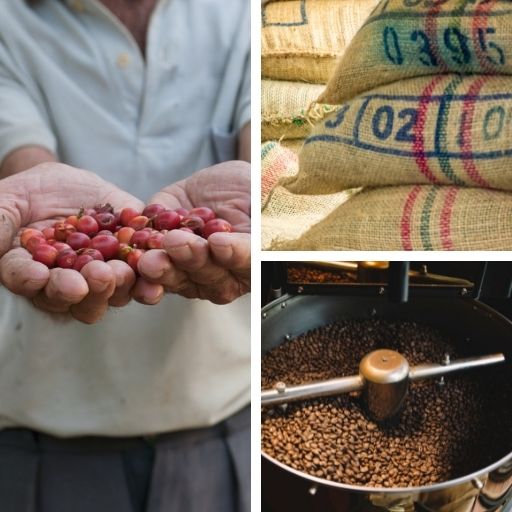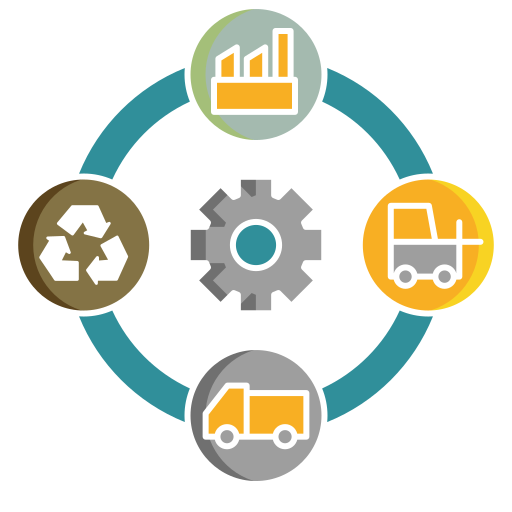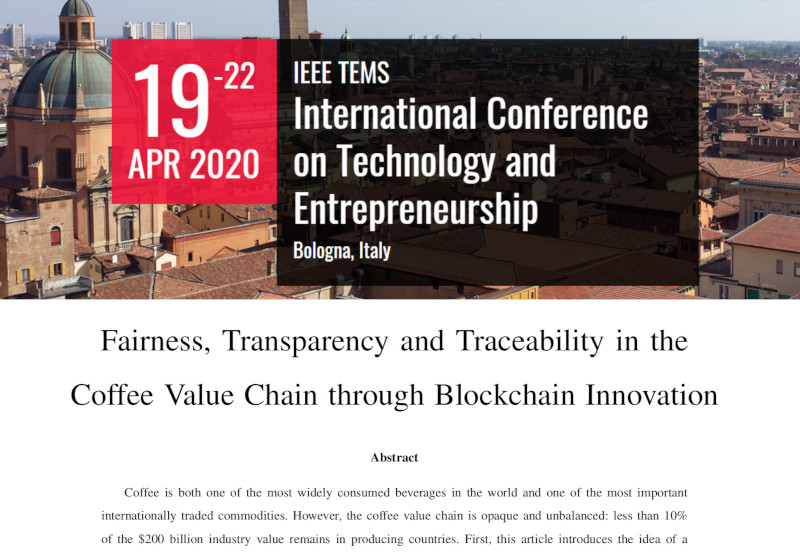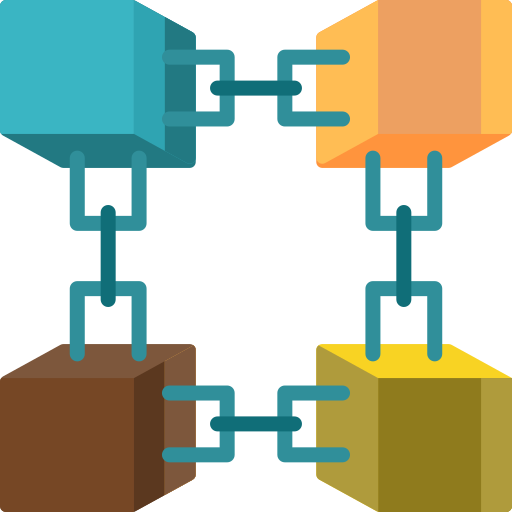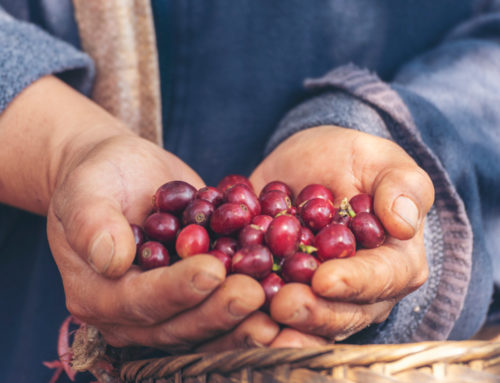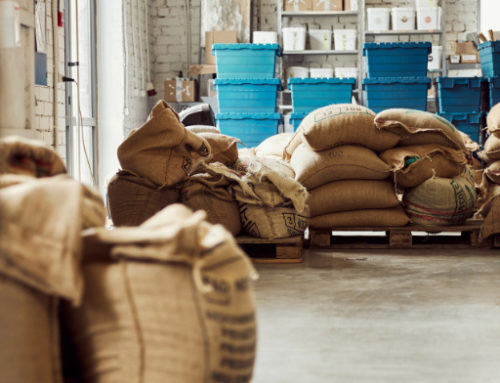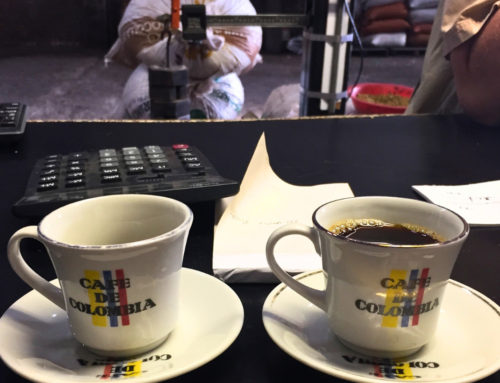How does the coffee supply chain work?
Like in many commodities, the coffee value chain also starts with a large number of growers that produce widely different quantities and qualities of coffee. In the case of coffee, there are around 25 million farmers globally, of which around 500’000 in Colombia alone, mostly smallholders.
The beans reach global markets through a series of activities and processes that make them suitable for incorporation into industrial operations, including processing at the mill, packaging into coffee bags suitable for export, and transportation.
Topics covered
- What is the coffee supply chain
- The journey of coffee from bean to cup: who’s involved?
- Challenges in the supply chain
- Towards a new model
What is the coffee supply chain?
The coffee supply chain is a complex network of processes and stakeholders involved in the production, processing, transportation, and distribution of coffee from the farm to the consumer.
It involves multiple players of various sizes who compete on brand, price, and market segmentation. There are several factors influencing the quality and pricing of coffee, including weather, pest damage, politics, and economics in coffee-producing countries. You can check our blog post What is Transparency in coffee and why is it important? to learn more about the factor influencing quality and pricing of coffee.
The quality and pricing of coffee heavily depend on the structure of each coffee region and country.There are some countries with complex and longer coffee supply chains such as Colombia where the industry relies on more than 500.000 small producers that in average own less than 3 hectares of productive land, therefore more intermediaries are needed to take coffee from the source to the port of destination.
Also, the low financial strength of small producers means that they have to rely on corporations and threshers to carry out tasks such as quality control and packing. The same is true for small producers in Africa, who rely on what are known as washing stations to process and finance the purchase of coffee.
This in contrast to countries like Brazil, where large-scale farms dominate the coffee industry, utilizing advanced technology and 100% mechanization to cultivate coffee on vast tracts of land commonly exceeding 50 hectares. This enables Brazilian producers to streamline the process of transporting coffee to ports, thereby reducing production costs and enhancing their competitiveness in the global market.
Main players involved in the coffee supply chain
1) Producers.
The coffee supply chain starts with coffee farmers who are the ones who grow and often process the coffee. Growers have the possibility to sell their crops in cherries, wet coffee, or in parchment. Producers can sell coffee directly to buyers, to local traders, to exporters, (or through) cooperatives and associations.
In this step, we also find Coffee pickers. Coffee pickers are the individuals responsible for manually harvesting coffee cherries from coffee bushes. They play a crucial role in the coffee industry, as the quality of the coffee depends largely on the moment when the cherries are harvested. Coffee pickers must have the skill and experience to identify ripe cherries and know when to harvest them, and they must be able to pick the cherries quickly and efficiently without damaging the bushes or the cherries.
2) Processors.
Coffee growers have the option to process their coffee beans themselves, but if they lack the necessary skills, resources, infrastructure or facilities, they can utilize the services of another farmer or a dedicated processing facility. Some processing stations specialize in handling coffee from nearby farms, and these stations are often operated by a cooperative of farmers who share equipment to mutual benefit. These stations can become a central hub for the community, facilitating the storage of products, quality control, and access to export markets.
3) Mill.
The processing mill is where the parchment is removed from the bean. A coffee bean has 5 layers of skins of different thickness and parchment is the last one. The process of removing the parchment skin from the beans is called coffee hulling and the resulting crop is called green (or raw) coffee, which is packaged into bags ready to be roasted, sold or shipped.
4) Local Traders.
Traders buy coffee in remote rural areas and then find customers that can be local or international. They are becoming less common as producers find exporters or direct customers.
5) Transporters/Shippers.
Deal with the transportation of the crops; physically move the beans on the road, by plane, or by sea.
6) Exporters.
Buy coffee directly from farmers, from cooperatives or from local traders. If necessary, exporters may also take care of the hulling coffee process according to the specifications provided by the importers. They also take care of the domestic logistics, financing, and can sell it Freight On Board (FOB) at the port of origin.
7) Importers.
A coffee importer or green coffee supplier plays a crucial role in the coffee supply chain, acting as an intermediary between coffee exporters in countries of origin, such as Brazil, Burundi, or Colombia, and roasters in markets like the EU or US. They often deal in large quantities and have a strong knowledge about each market’s preferences.
These importers are responsible for buying coffee from exporters and selling it to roasters and cafes. They also deal with the financing of the crops, logistics, and procurement at origin and destiny.
8) Roasters.
Roasters buy green (i.e. unroasted) coffee beans and roast them according to the tasting profile that appeals to end consumers. The type of roasting applied to the coffee (e.g. light, medium, dark) strongly depends on the local market where the coffee is to be sold.
The unique values, roasting approaches, and sourcing strategies of each company and roastery lead to significant price variations. The prices of coffee beans can fluctuate greatly depending on the quality of the coffee beans and the nature of the relationships between roasters and other parties involved in the supply chain.
9) Retailers, coffee shops and barista.
Retailers such as supermarkets buy roasted beans or grinded coffee from roasters, store it and prepare it for selling in national markets.
Specialty coffee shops, on the other hand, have a more sustainable view of the industry and are highly interested in quality, flavor profiles and producer economics. They also do more detailed work with baristas who know exactly how the best coffee should be prepared and do this to delight their clients and captivate more people in the world of quality coffee.
Customers must scrutinize their coffee suppliers’ sourcing practices, ensuring that the quality of their coffee is genuinely high and not just a marketing ploy.
This involves understanding the suppliers’ commitment to ethical sourcing, transparency, and sustainability, as well as their relationships with farmers and the environmental and social impact of their practices.
Challenges in the coffee supply chain
Coffee is not only one of the most widely consumed beverages globally, but it also has a significant social and economic impact on the millions of smallholder farmers who produce it, with around 25 million small-scale farmers, mostly operating on less than 5 hectares of land, relying heavily on coffee as a source of income.
- The main challenges the coffee supply chain is facing are:
- Low and volatile prices tied to the speculative markets
- Climate change
- Logistical Challenges
- Rising Costs of fertilizers and supplies
- Lack of traceability which impacts quality and sustainability
- Increased competition in every step of the value chain
- Rising costs for business owners.
- Scarce labor at a farm and coffeeshop level.
Towards a new model
Coffee is a business for anyone involved in its value chain; it is a business for farmers as it is for roasters, importers and exporters. The goal of farmers is a reasonable profit, not the aid, not the charity, not to be at the center of social programs. In the end, farmers are another and crucial value-chain business partner and should be treated and rewarded accordingly.
We believe that the first step towards doing so is to bring transparency and digitalization into a complex supply chain. At Fantine, we connect international buyers with high-quality coffee and sustainable farms by offering added value services from logistics to finance across the supply chain.
Blockchain & Coffee
The application of blockchain technology to the coffee industry can overcome some of the challenges described previously and provide a way to tackle the imbalance in the coffee value chain highlighting a path that leads to creating a more balanced and sustainable industry while simultaneously creating additional value in both producing and consuming countries as well as at the consumer end.

